
20 minute read
Mommy Makeovers, Botox & More
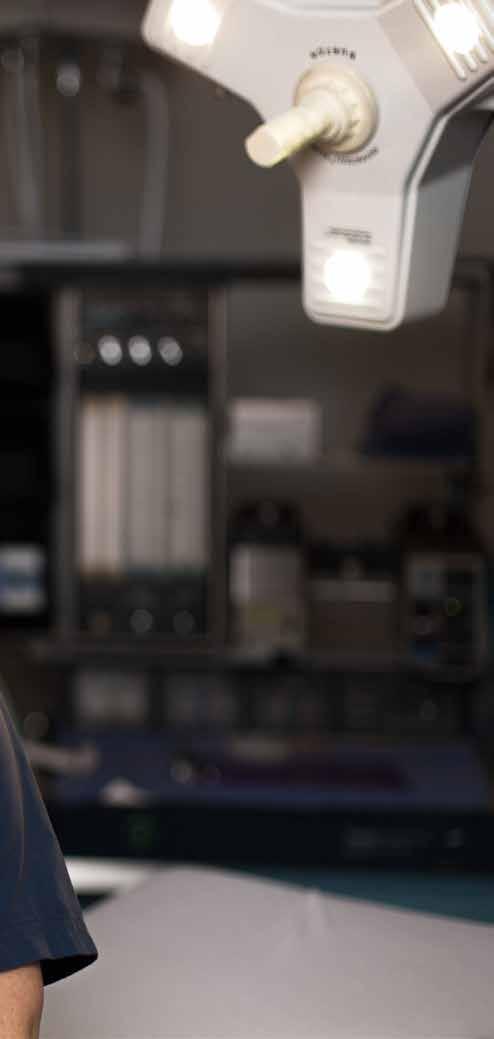
Written by: Tyrah Walker Photography by: Brandon Pham and Submitted by Plastic Surgery Associates of Valdosta
Dr. Sonya Merriman is a board-certified plastic surgeon and the leader of Plastic Surgery Associates of Valdosta. She has been a plastic surgeon for 28 years and has no plan to slow down anytime soon. Being inspired to focus on plastic surgery during a rotation procedure during her general surgery residency, Merriman realized her passion to help improve her patients' lives whether it's through reconstructive or cosmetic surgery.
Plastic Surgery Associates of Valdosta specializes in cosmetic procedures for the breast, face, and body. Well-known procedures such as buttlifts, breast implants, facelifts, and tummy tucks can all be done at the practice. Other procedures that can be performed at the practice include skincare, injectables, laser hair removal, and microblading, just to name a few. The practice has services available for both men and women, including procedures such as eyelid lifts and rhinoplasties (nose reshaping).
One of Merriman’s favorite procedures to perform is the “Mommy Makeover,” which includes a tummy tuck and one of the reconstructive breast options. She described the service as a “dramatic makeover” that gives mothers a new boost of confidence after giving birth.
Botox is the most popular non-surgical procedure that patients come in for, while breast augmentation and liposuction are the most popular surgical procedures.
— Dr. Sonya Merriman
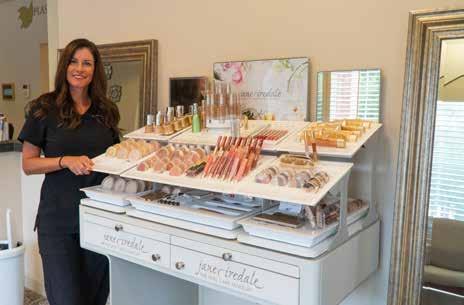

— Dr. Sonya Merriman
Another main priority for Merriman is to make sure her patients are treated like family. When a patient comes into the practice, they are greeted by a friendly staff that promises to take care of their needs. Merriman said that she “makes friends, not patients,” and that is something she aims for during every patient encounter. The practice takes pride in making every patient feel like family. Merriman doesn’t want her patients to just feel like a number.
The staff includes a few registered nurses, aestheticians, a surgical technician, an anesthetist, and other office personnel.
Merriman is transparent with all who are interested in getting a procedure. Her number one piece of advice is to do the research. Not everyone is board certified to provide surgical services, and more harm than good can be done if not performed by a trained professional.
“Make sure that the surgeon you’re going to see is board-certified by the American Board of Plastic Surgery and has privileges to do the procedures in the hospital even if they’re not going to be done in the hospital,” Merriman said. “I have my own ASC (ambulatory surgery
center). We do our
surgeries here at the office, but I have privileges to do all those procedures at the hospital as well.”
This important factor can give the patients a sense of relief in knowing the hospital has done its research on the doctor and has looked into their credentials and training.
Her second piece of advice is to plan ahead. If surgery is what a patient desires, Merriman always tells her patients to have help and support ready ahead of time for the recovery process, which varies depending on which procedure is being done and the person’s body. Having a strong support system can even help the body to

(229) 242-3002 (912) 452-5722 230 Northside Dr. Valdosta, GA 31602 sonyamerrimanmd.com

Hours:
Monay-Thursay: 8 a.m. to 5 p.m. Friday: 8 a.m. to noon
heal quicker and can help elevate a person’s self-esteem.
One myth that Merriman hears a lot is that implants are easy to do when they really aren’t. She has had patients come in that have had procedures done incorrectly by physicians who were not board-certified.
Another myth that Merriman comes across is that some procedures make a person look fake or false. The truth is that you can have your surgeon perform so well that one would never be able to tell that you got work done, such as botox or fillers. As Meriman puts it, “You don’t have to look Hollywood.” Everyday people can benefit from it.
Why should people consider plastic surgery? Well, for Merriman it’s clear: People want to look and feel great. It boosts confidence and can be beneficial for their mental health. While some may be against changing their looks, she encourages patients to do what’s best for them. There shouldn’t be any negative stereotypes for wanting to enhance. It doesn’t matter if you’re young or old, male or female; all can benefit from her services.
“For people who are out in the public and need to look their best, I think it gives them an edge,” Merriman said. “People will tell you that there’s age discrimination, that if you look older you may be less likely to get the promotion or get the job. Looking more youthful, and of course feeling good about it, gives you a step up in the professional world.”
Merriman has performed over 4,000 procedures and is happy to welcome new patient consultations. With a five-star RealSelf rating, years of experience, passion, and drive, Merriman is one of the best in town and equipped to help patients with their beauty needs. The practice is located in Valdosta, but receives patients from all over South Georgia and North Central Florida as well. For more information on Merriman and Plastic Surgery Associates of Valdosta, visit sonyamerrimanmd.com.
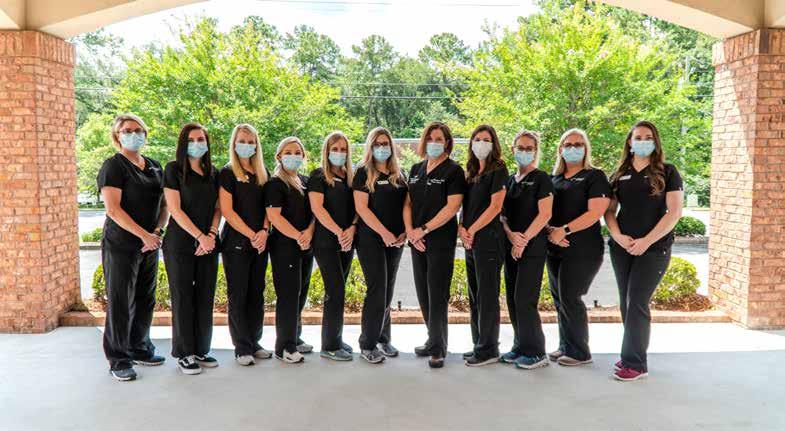
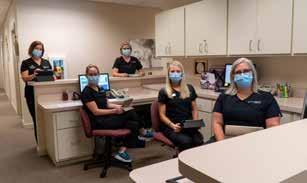
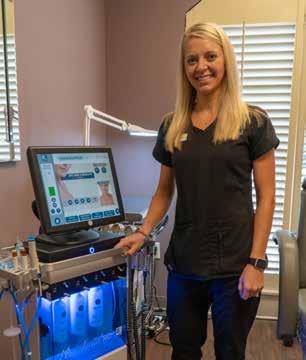
27
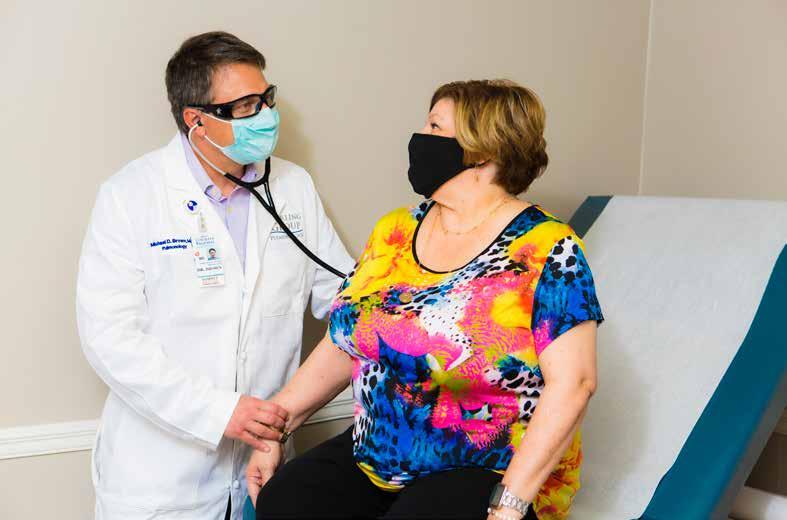
Colquitt Regional Medical Center’s Response to COVID-19
Written by: Tyrah Walker
It’s been months since the first wave of the COVID-19 pandemic caused everything to shut down. Moving forward to the second half of the year, numbers are still rising, people are still being affected, and one question still remains: When will things in our country go back to normal?
During these strange and unpredictable times, citizens look to the medical community for answers and hope. The doctors, nurses, and other medical staff are our heroes. They risk their lives to get us the answers we are searching for. They’re the ones making sure that guidelines are being followed and precautions are being taken for our safety.
Colquitt Regional Medical Center is one of many hospitals ensuring the safety of its patients. One per
son you will see walking down the hospital halls and treating patients is Dr. Michael Brown. Not only does Brown practice pulmonology, but he also works in critical care and is the chief medical officer at the hospital.
As a pulmonologist, Brown works as a lung specialist. He sees patients who deal with a variety of lung issues including asthma, shortness of breath, and lung diseases. As one can imagine, Brown has recently been helping patients with lung complications caused by COVID-19. Studies have shown that patients with a history of lung-related issues have been impacted the most during this pandemic, but there are ways to help control the numbers from rising.
“To protect yourself from COVID-19, the best thing that we can do is work together as a community,”
Brown said. “We all need to wear masks when we are in public areas. So, any time you are within six feet of an individual, you should be wearing a mask.”
The hospital is working hard to ensure that needs are being met for each patient. Safety measures have been implemented to help prevent the spread of COVID-19. As an example, all employees and visitors are required to wear a mask inside the hospital at all times. All healthcare workers must also wear goggles or shields in addition to masks when coming into contact with a patient. The hospital has also put into place COVID zones and COVID-free zones within the emergency department and ICU. If there is suspicion that a patient coming in has COVID symptoms, they are placed in a designated COVID zone.
That is just inside the hospital. Outside the hospital, Brown said there are steps that patients have to follow before getting any procedure. “Anyone coming in for a surgery or same-day procedure will be tested for COVID prior to their procedure date. Those who are coming in for a test must be screened for body temperature and are asked a series of questions about possible symptoms or exposure. We ask them to isolate themselves before they come in for those procedures,” Brown said. “It's to make sure that we’re not causing extra risks to them or to ourselves.”
The hospital is doing community outreach to help relieve some of the stress and anxiety that have skyrocketed during this pandemic. This includes helping other, smaller health facilities during this time.
“We’re working with local nursing facilities and ar- eas that have high risk patients to ensure that they’re doing everything they can,” Brown said. “And in the event of them having a positive coronavirus case, we are giving them the assistance they need to make sure that outbreak is limited.”
“Whenever a patient is coming in the hospital, having that ability to rapidly identify them as having the coronavirus or not having the coronavirus enables us to create those COVID zones and COVID-free zones. It keeps us from having to utilize some of our protective gear that you don’t require for non-COVID patients.”
— Dr. Michael Brown
Brown is extremely pleased with the way the hospi- tal team has helped their patients, even when it comes to providing testing kits. In the early stages of the pandemic in March and April, testing kits were not as readily available as they are now. The hospital had to depend on companies outside their institution, which changed week to week and would take some time to get accurate results. Now, the hospital is able to provide rapid COVID-19 testing kits that Brown described as being “monumental." The test is done by nose swab, and results can be back to the patient within two hours.
“Whenever a patient is coming in the hospital, hav- ing that ability to rapidly identify them as having the coronavirus or not having the coronavirus enables us to create those COVID zones and COVID-free zones,” he said. “It keeps us from having to utilize some of our protective gear that you don’t require for non-COVID patients.”
It is important to note that testing is limited, and the hospital cannot provide rapid testing at large. Those who are coming to the hospital ill and healthcare workers who have come into contact with infected patients are able to get the rapid test.
Brown's best advice for dealing with the current pandemic is to stay calm, be rational with your thoughts, isolate yourself from those who are sick, and wash your hands frequently. He is optimistic that a cure will be found one day and is proud of his team and the organization. Every day, Brown looks forward to being on the front lines to help those in need.
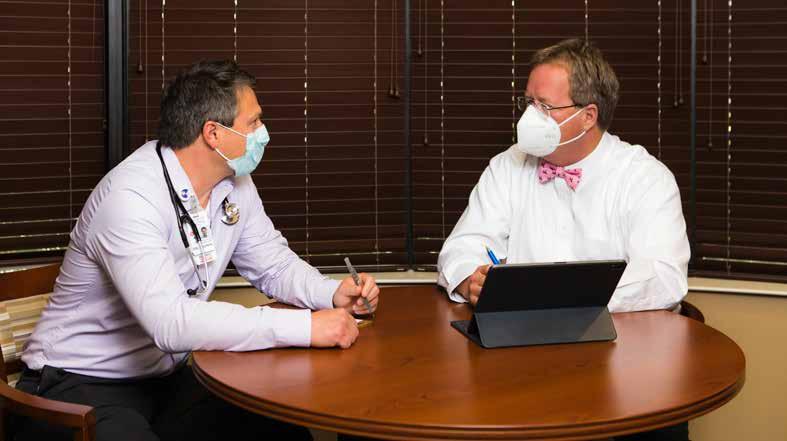
Should I Go Vegan?
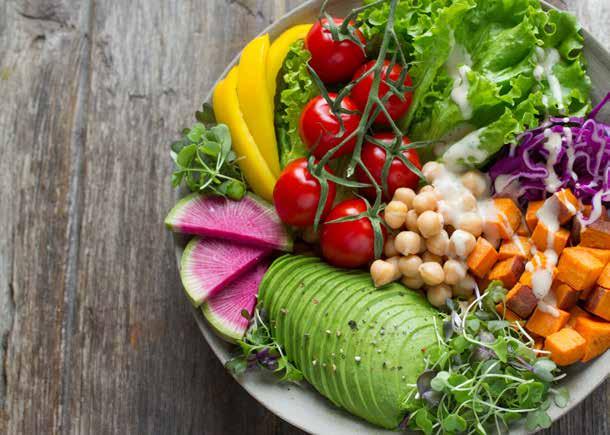
Written by: Jay Summer
A vegan diet, which was once considered fringe, is rapidly increasing in popularity across the United States. A Nielsen survey found that 39% of Americans want to eat more plant-based foods, and 14% believe there's no reason to eat meat at all.
Going vegan means completely giving up animal products, such as meat, fish, eggs, cheese, yogurt, and milk. Since Americans have one of the most meat-heavy diets in the world, the idea of cutting out animal products might feel intimidating.
If you're curious about trying a vegan diet, medical research findings suggest it might be worth pursuing. There are multiple health benefits associated with giving up animal products and eating more plant-based foods. And with a little more knowledge under your belt, going vegan won't be as difficult as you might think.
Benefits of Eating a Vegan Diet
Some people go vegan because they can't tolerate the idea of contributing to the death of an animal. Others are concerned about how animal agriculture contributes to climate change and become vegan in an effort to help the environment. Many people switch to a vegan diet because they want to improve their health.
Research has found that cutting out meat can reduce a person's risk of cancer, Type 2 diabetes, and heart disease. People who don't eat animal products tend to weigh less, have lower cholesterol and blood pressure, experience less arthritis pain, and live longer.
With all of these potential health benefits, it's no wonder the vegan trend keeps growing. A vegan diet can improve a person's health primarily because it involves two major changes: eating fewer animal products and eating more whole, plantbased foods.
People who avoid animal products and eat a diet rich in plant foods tend to consume more nutrients, less saturated fat, and more fiber. These differences likely cause the differences in health found between vegans and omnivores.
Some studies suggest that reducing animal product consumption rather than cutting it out completely also provides some health benefits, though to a lesser degree. For example, removing or reducing certain meats from one's diet can reduce cancer risk.
According to the World Health Organization, processed meat is carcinogenic, and red meat is probably carcinogenic. Research has connected both with colorectal cancer. As a result, reducing your consumption of processed and red meat could reduce your risk of colorectal cancer and, potentially, other cancers as well.
Vegan Protein Sources
Grains
Rolled Oats Quinoa Rice
Seeds
Hemp Seeds Flax Seeds Sesame Seeds Chia Seeds Sunflower Seeds Pumpkin Seeds
Nuts
Almonds Cashews Walnuts Hazelnuts Pecans
Soy
Edamame Tofu Soy Milk Mung Beans
Beans
Kidney Beans Chickpeas Cannellini Beans
Vegetables
Brussels Sprouts Artichokes Sweet Corn Mushrooms Spinach Broccoli Asparagus Potatoes Sweet Potatoes
Fruits
Guavas Avocados Blackberries Apricots Kiwis Bananas
A common misconception about vegan diets is that they are expensive or inaccessible to the average person. This idea probably comes from an association of vegan diets with high-end vegan specialty foods, such as oat milk, nut cheeses, and meat alternatives.
The reality is, a person doesn't have to buy specialty health foods or imitation meat and cheese products to maintain a vegan diet. Instead, they can opt for healthy, unprocessed sources of plant protein. These foods tend to be healthier and much less expensive than both animal products and their alternatives.
Here are some affordable food items that are also protein-rich: • Beans, especially lentils • Edamame (soybeans) • Nuts and nut butters • Oats and oatmeal • Wild rice
Transitioning to a Vegan Diet
If you're interested in transitioning to a vegan diet, consider doing it gradually. There's no rule that says you must become 100% vegan overnight. An effort to be super strict from day one could frustrate you, and you might give up altogether.
To begin your plant-based journey, reflect on your current diet and write down all of the animal products you currently consume. Instead of overhauling all meals and snacks at once, start with one meal, such as breakfast. After you've eaten a plant-based breakfast every day for a couple of weeks, choose another simple change toward veganism that you can implement.
Gaining the support of others can also help as you become vegan. Community events such as Meatless Mondays, in which people are vegan for one day each week, and Veganuary, in which people become vegan for the month of January, can provide motivation and accountability.
Takeaway
Becoming vegan doesn't have to be daunting. If you're interested in transitioning to a vegan lifestyle, whether for your health, the environment, or the animals, keep your purpose in mind to remain motivated.
If the shift to veganism feels difficult at times, remember that you don't have to change everything overnight. Be patient with yourself, give yourself time, and trust that you can do it.
Instead of Meat
Beans Quinoa Brown Rice Tofu Lintils Peas Oats Seeds Nuts Edamame
Instead of Dairy Milk
Almond Milk Oat Milk Coconut Milk Soy Milk Flax Milk Rice Milk Hemp Milk
Instead of Cheese
Nutritional Yeast Vegan Cheese (ex: Follow Your Heart, Parmela, etc.)
Instead of Eggs
Flax Seeds Chia Seeds Bananas Avocados Applesauce Vegan Eggs
Instead of Honey
Agave Pure Maple Syrup
Instead of Butter
For Spreading: Earth Balance Miyoko's Coconut Sugar Dates
For Baking: Bananas Applesauce
Cheap Plant-Based Groceries To Save You Money
Beans & Lentils – You’ll save the most by purchasing dried beans in bulk, but canned versions can be budget-friendly.
Rice – It’s cheap and can be bought in bulk to save even more. When combined with beans, it forms a complete protein profile.
Bananas – These are probably the cheapest fruit you can find. You’re paying cents per pound. If you have too many, bananas freeze well to be used later in smoothies.
Oatmeal – This is a good source of iron and a filling breakfast food. Combine with bananas for an inexpensive daily breakfast.
Ingredients
1 tablespoon vegan butter 2 tablespoons olive oil, divided ½ medium onion, chopped 2 cups sliced mushrooms (16-ounce package) 2 cups cooked lentils, divided 1 cup cooked brown rice ½ teaspoon sea salt ¼ teaspoon garlic powder 1 teaspoon dried basil 2/ 3 cup instant oats ½ cup breadcrumbs Handful parsley and cilantro 2 tablespoons vegan Worcestershire ¼ cup Vegan BBQ Sauce ½ teaspoon liquid smoke ½ – 1 cup extra Vegan BBQ Sauce
Instructions
Add vegan butter and 1 tablespoon of olive oil to a large pan over medium-high heat. Add chopped onions and mushrooms. Cook until vegetables are fully translucent. Once cooked, turn off the heat and set aside. Add half of the lentils to a food processor along with the cooked mushrooms and onions. Process until just combined. The mixture will be wet and sticky. It should hold and bind together.
Add the mixture to a large mixing bowl. Add the rest of the lentils, cooked rice, sea salt, garlic powder, basil, instant oats, breadcrumbs, parsley, cilantro, vegan Worcestershire, BBQ sauce, and liquid smoke. Mix together until fully combined. Preheat oven to 350 degrees F. Form lentil mxture into balls and then place each one on a pan lined with parchment paper.
Brush lentil meatballs with 1 tablespoon of oil and extra barbecue sauce.
Bake in the oven for 20 minutes, flipping after 10 minutes. Allow to cool. Serve with your favorite sides or as an appetizer.
Courtesy of veganwithcurves.com
Ingredients
For the Buffalo Cauliflower:
1 head of cauliflower, cut into florets (about 4 cups chopped) 3/4 cup brown rice flour 3/4 cup unsweetened almond milk
Pinch of black pepper 1/2 cup Frank’s Buffalo Sauce
For the Vegan Ranch Dressing:
1 package soft tofu 3 tablespoons fresh lemon juice 1 tablespoon apple cider vinegar 1 teaspoon garlic powder 1 teaspoon onion powder 1 teaspoon sea salt
Handful of fresh parsley, finely chopped
For the Wraps:
Finely chopped kale or shredded romaine lettuce
Thinly sliced cucumber
Finely grated carrot
Sliced avocado
Large tortillas
Instructions
Make the Buffalo Cauliflower:
Pre-heat the oven to 425 degrees F.
Mix the flour, milk, and pepper together in a bowl and let sit for 5 minutes. Adjust the liquid if needed to create a thick but slightly drippy batter.
Dip the cauliflower florets into the batter and place on a baking sheet lined with parchment paper or a silicone baking mat.
Roast for 20-25 minutes until starting to get slightly browned.
Remove from the oven and mix with the buffalo sauce.
Place back in the oven for another 15-20 minutes until browned.
Make the Vegan Ranch Dressing:
Blend all ingredients until smooth and creamy.
Assemble the Wraps:
Layer 4 tortillas with thinly sliced cucumber, chopped kale or shredded lettuce, grated carrot, and avocado. Top with the buffalo cauliflower and vegan ranch dressing.
Courtesy of runningonrealfood.com


Does Screen Time Affect Children’s Development?

Written by: Jay Summer
Over the past century, the presence of screens in everyday life has rapidly increased. Only 9% of American households had televisions in 1950. By 1978, that jumped to 98%.
Later, computer ownership followed a similar upward trajectory. In 1984, only about 8% of American homes contained a computer. By 2016, that number was over 89%.
The smartphone is the latest screen with skyrocketing ownership. In 2011, 35% of Americans owned a smartphone. In 2019, 81% owned a smartphone, and 96% owned some type of cell phone.
Of course, adults aren't the only ones using these devices. Children watch TV, use computers, and play on smartphones. On average, children 8 and under spend 48 minutes per day looking at a mobile device. Many people are beginning to wonder what effect this screen time has on kids.
How Do Screens Affect Children?
Most experts agree that too much screen time harms children's development. Researchers found that increased screen time (of any type) led to lower scores on developmental tests given to children ages 2, 3, and 5. They speculate that screen time could be causing developmental and academic delays.
This study wasn't the only to find an association between screen time and child development. Another study found that time spent watching TV predicted lower school achievement. Another found that watching entertaining (but not educational) TV before age 3 was associated with attention problems five years later.
Excessive screen time appears to affect more than children's test results. Brain imaging of preschool children revealed differences in the white matter of kids who looked at screens more. Looking at screens too much might affect the physical structure of children's brains, particularly in areas known for supporting language and literacy.
How Much Screen Time Is Okay for Kids?
The World Health Organization provides screen time guidelines for children under 5 years old:
• Less than 2 years old: No screen time at all • Age 2 to 5: Less than one hour of screen time per day
The American Academy of Child and Adolescent Psychiatry is a bit more lenient in their screen time guidelines:
• Less than 18 months old: Limit screen time to video chats with an adult. • Between 18 and 24 months old: Limit screen time to educational content with a caregiver. • Ages 2 to 5: Limit non-educational screen time to one hour on weekdays and three hours on weekends. • Ages 6 and up: Encourage healthy habits and limit screen time.
Although screens can provide children with educational benefits, most American kids look at screens too much. We aren't completely sure how this will affect them yet. Initial research shows that excessive screen time can harm kids, especially those under 2 years old.
As guidelines continue to evolve, parents should focus on teaching their kids how to have a healthy relationship with screens. For example, kids should eat meals without looking at screens, enjoy screen-free time with friends and family, and avoid screens before bedtime.



